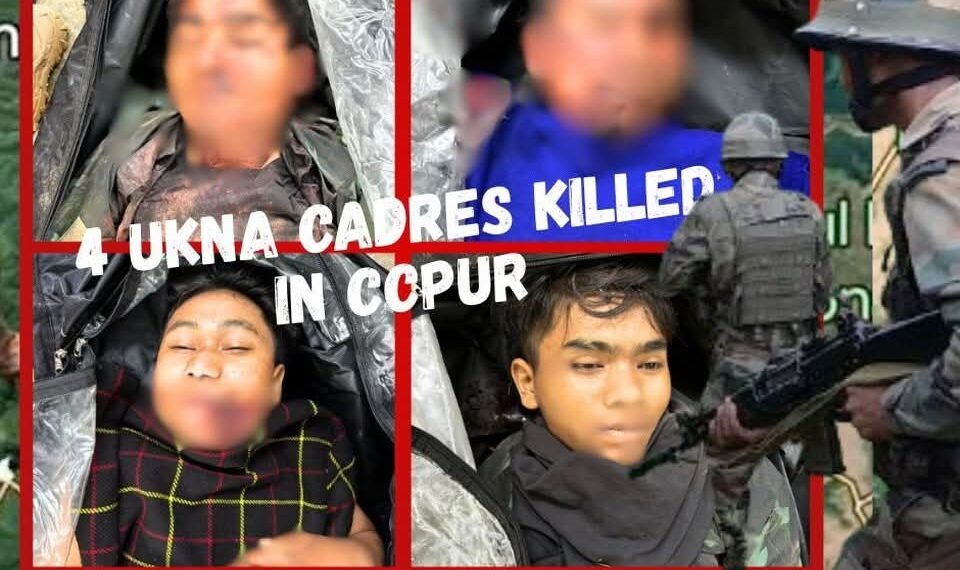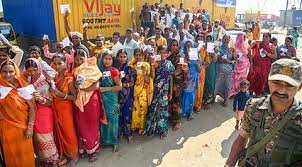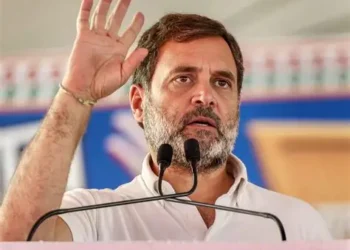The Khanpi encounter has triggered outrage across the Kuki-Zo community, with locals alleging that the four victims were innocent village volunteers. As the Army maintains silence and no proof has been released to back its claims, rights groups are demanding a judicial probe.
BY PC Bureau
November 5, 2025
They were not battle-hardened rebels or gun-toting insurgents — they were teenagers. Yet, the Indian Army has classified four boys aged 17 to 19 as “armed militants” and gunned them down in what it calls a “successful encounter” in Khanpi village, Churachandpur district.
The four victims — Thangzalam (17), Lalminlun (18), Letzamang (18), and Thanglun (19) — were reportedly local volunteers guarding their village periphery amid ongoing ethnic tensions. Their families say the boys were asleep in a makeshift hut when troops raided the area before dawn.
Teenagers or Terrorists?
The Assam Rifles and 21 Para Special Forces claimed the operation was launched after “credible intelligence” indicated the presence of militants. The Army’s statement described it as a “clean strike” with no civilian casualties and claimed recovery of weapons.
However, eyewitnesses, church leaders, and tribal organisations say no firing took place from the boys’ side. “It was an execution, not an encounter,” alleged Kuki-Zo CSOs. “They were unarmed, in T-shirts and slippers, not fatigues. To call them insurgents is criminal.”
READ: Opinion | Manipur Encounter’s Chilling Message: Tribal life Comes Cheap
READ: “Madness,” Says Brazilian Model at the Heart of Rahul Gandhi’s PC
The Uncomfortable Truth
The Khanpi killings have reignited allegations that counter-insurgency operations in Manipur are being used selectively — with disproportionate force used in the hills, and restraint in the valley. Notably, not a single Meitei militant has been killed in Army action since the conflict began 18 months ago, even as heavily armed valley-based groups move freely.
Rights activists are demanding an independent judicial inquiry, calling the incident a violation of both domestic law and international humanitarian norms. “When soldiers kill minors and call them insurgents, it’s not law enforcement — it’s lawlessness,” said a legal expert.
The Kuki Organisation for Human Rights Trust (KOHUR) has decided to seek intervention of National Human Rights Commission in the matter. “We’ll write to NHRC and seeka through probe in this tragic event,” said KOHUR Chairman Benjamin Mate.

Patterns of Impunity
This is not the first time young tribal boys have been shot dead under similar circumstances. In Jiribam earlier this year, 10 Hmar teenagers were killed in what was initially reported as an “exchange of fire” but later questioned by the Indigenous Tribal Leaders’ Forum. Likewise, in 2023, two Kuki women were killed in Churachandpur — no inquiry followed.
The Arambai Tenggol and other Meitei militant groups continue to roam the Imphal valley with arms, yet face little or no military confrontation. “If these were Meitei boys, would they be shot dead in their sleep?” asked a member of the Kuki Women’s Union.
The Age of Fear
Beyond politics and ethnicity, the Khanpi encounter underscores a deeper tragedy — the militarisation of youth. With the state divided and law absent, hundreds of teenagers now man self-defence groups or patrol their villages by night. “They grew up in fear, not rebellion,” said a teacher from Churachandpur. “To mistake fear for insurgency is a failure of governance.”
As demands grow for accountability, the killings have become a grim symbol of a state where being young, tribal, and alive can itself be treated as provocation.
“They called them insurgents,” said a villager on phone, “but all we’ll bury were children.”













